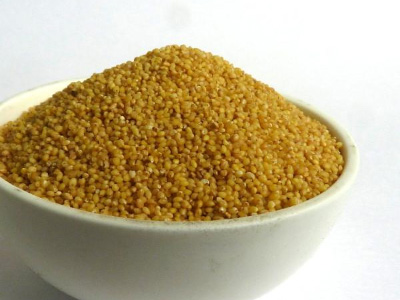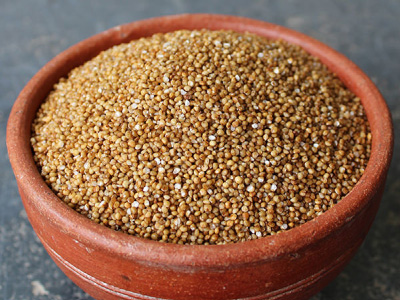Young or old – each of us look good and feel good when we are healthy and fit. And, at the root of it is how are we providing nourishment to the body. No doubt, food provides nutrition to us but at the same time it is also necessary to eat the right food. Heeding to this, the National Nutrition Week is observed annually across India from 1 September to 7 September. Being a theme-based initiative, each year it focusses on one aspect of food, nutrition, and health. The theme for 2018 is ‘Go Further with Food’ with the objective to explore and wisely choose nutritious food options from the nature.
Though all kinds of food provide nutrition at various levels, millets are the most underrated of them all. However, recent studies on nutritional value of millets have compelled the decision makers and business community to promote millets as a mainstream food item. Termed as Smart Food and Super Food, millets have multiple benefits and can largely contribute to nutrition security of people. Here, we will explore the nutritional value and health benefits of few millets:
Ragi – Also known as Finger millet, Ragi is considered as a good replacement for rice and wheat. It is a storehouse of proteins and amino acids while also being rich source of calcium and other minerals. Including ragi in diet can be beneficial for controlling diabetes.
Bajra – Also known as Pearl millet, Bajra is referred to as a miracle millet. It is not only rich in protein, fibre, calcium, and magnesium, but its iron content is eight times higher than that of rice. Making bajra a part of your meal will constipation and digestion issues at bay.
Jowar – Also known as Sorghum, Jowar is a rich in calcium and also is a good source of protein, iron, and fibre. Adding jowar to your diet will reduce cholesterol levels and can potentially promote weight loss too.
Foxtail millet – This millet is rich in dietary fibre and essential minerals like iron and copper. Interestingly, it contains smart carbohydrates that hinders sudden rise in blood sugar level. It also promotes immunity and reduces levels of bad cholesterol.
Barnyard millet – The nutritional content of this millet makes it one of the must items in our diet. It is a rich source of antioxidants and essential minerals like calcium and phosphorus contributing to body building. It is high in fibre and contains six times more fibre than wheat that helps to maintain satiety thereby making it an ideal millet for weight loss.
Kodo millet – It is an easy to digest millet rich in antioxidants and phytochemicals that help fight lifestyle-related health issues. It has been found helpful in reducing joint pains and regularising menstrual cycle in women.
Little millet – Contrary to its name, this millet is a rich source of B- vitamins and essential minerals such as ion, calcium, zinc, potassium and the like. It has fibre content and also provides essential fat to the body, the kind that helps to maintain body weight.
In general, millets have several health benefits.
Akshaya Patra’s introduces millets in mid-day meal
The Akshaya Patra Foundation, a mid-day meal NGO in India with a beneficiary base of 17.6-lakh children across 38 locations of 12 states in India has been in the service of providing nutritious meals to school children since 2000. As a next step to increase nutritional value in the meals the NGO has begun a pilot in partnership with Government of Karnataka with ICRISAT (International Crops Research Institute for the Semi-Arid Tropics) as the knowledge partner to include millet-based dishes in the mid-day meal menu. Based on the success of the pilot, the NGO will begin serving millet-based dishes to a greater number of children.
Conclusion
Well, as we conclude our series on National Nutrition Week, we urge for your active involvement in providing nutrition-rich meals to children. You can either choose to conduct a fundraising campaign for the Foundation or you can also support by choosing to donate to end hunger. Your contribution will be optimally utilised to provide healthy and wholesome meals to children across India. And, not to forget, by nourishing children you will become a supporting pillar for a healthy, educated, and a prosperous nation!
















